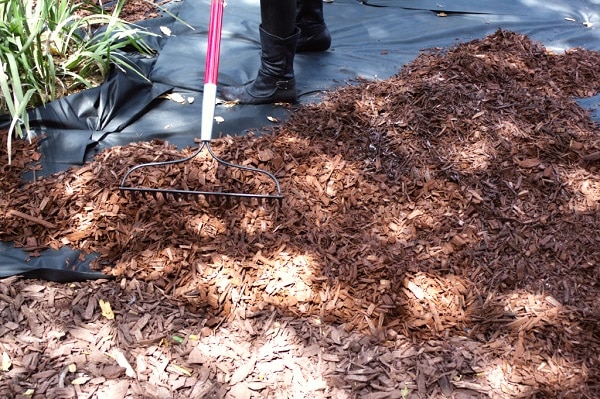It’s essential to properly care for landscaping plants to keep your outdoor oasis looking beautiful. Whether you have a small front garden or lush backyard paradise, the proper maintenance and care can help ensure that your investment in these living elements yields long-term results and enjoyment. Fortunately, with knowledge of best practices and proper preparation, it doesn’t take much hands-on work to ensure a healthy landscape full of vibrant blooms or sturdy evergreens year after year. This post will explore how to properly select and maintain plants and provide tips on potential challenges associated with caring for them. Ready to get started? Then let’s dive into understanding just what it takes to keep your landscaping looking great!
Contents
- 1 Choosing the Right Plants for Your Landscape
- 2 Preparing the Soil for Planting
- 3 Planting Techniques for Healthy Growth
- 4 Watering Your Landscaping Plants
- 5 Mulching and Weed Control
- 6 Fertilizing Your Landscaping Plants
- 7 Pruning and Trimming for Shape and Health
- 8 Dealing with Common Pests and Diseases
- 9 Winterizing Your Landscaping Plants
- 10 Use These Tips To Care For Your Landscaping Plants
Choosing the Right Plants for Your Landscape
Transforming your yard into a beautiful oasis of lush greenery and colorful blooms can be exciting, but choosing the right plants for your landscape can be daunting. When selecting your plants, it’s essential to consider factors such as climate, soil, sunlight exposure, and water requirements. Opting for native species can also benefit your yard by providing a habitat for local wildlife and reducing water usage.
Take your time browsing through plant nurseries and do your research to ensure that the plants you choose will thrive in your specific area. With the right choices, you can create a stunning and sustainable landscape that will be the envy of the neighborhood.
Preparing the Soil for Planting
Preparing the soil for planting is essential to having a successful garden. It’s important to begin by clearing any debris and removing any weeds. Once the area is clear, it’s time to turn the soil over using a garden fork or tiller. This breaks up clumps and allows air and water to penetrate the soil. Adding compost or fertilizer at this stage can help provide nutrients for healthy plant growth. After the soil has been tilled and amended, raking the surface is important to create a smooth, level area.
Finally, water the soil thoroughly to help settle it and prepare it for planting. With proper preparation, the soil will provide a healthy environment for your plants to grow strong and produce delicious fruits and vegetables.
Planting Techniques for Healthy Growth
Planting a garden can be a rewarding experience, but it can be frustrating when plants fail to thrive. Fortunately, there are techniques you can use to ensure your plants grow healthy and strong. Begin by preparing your soil, whether adding compost or other amendments or loosening it up to promote root growth. Make sure you choose the right plants for your specific climate, as different species thrive in different conditions. When it comes time to plant, follow the appropriate spacing and depth guidelines for each plant.
Finally, remember to provide adequate water and nutrients to your garden, whether that means investing in an irrigation system or simply fertilizing regularly. By following these planting techniques, you’ll be on your way to a successful and bountiful garden in no time.
Watering Your Landscaping Plants
A picturesque garden or a beautifully manicured lawn is a dream for many homeowners. However, adequate watering is key to maintaining a healthy and lush landscape. When it comes to watering, many believe that more is always better. However, this notion could not be further from the truth. Overwatering can lead to waterlogged roots, resulting in root rot and ultimately killing your plants. On the other hand, underwatering your plants can cause wilting and browning of foliage and stunted growth.
So, the key is to find the right balance. Water your plants deeply and less frequently, allowing the soil to dry out before each watering. This will encourage your plants to develop deeper roots and become more drought-tolerant. By following these guidelines, you can ensure that your landscape will thrive and impress anyone who lays eyes on it.
Mulching and Weed Control
Maintaining a beautiful landscape requires dedication and attention to detail. One of the essential tasks in landscaping is mulching and weed control. Mulch provides a protective layer around the base of your plants, regulating temperature and moisture to help plants thrive. It also acts as a natural barrier against unwanted weeds, reducing the time and effort you need to spend on weeding.
On the other hand, weeds can be a real nightmare for your landscaping plants, competing for essential nutrients, water, and light. Preventing weeds from growing, therefore, is crucial to maintain your plants’ health. By mulching and controlling weeds, you can make your landscaping plants beautiful, healthy, and thriving, adding to your property’s overall appeal.
Fertilizing Your Landscaping Plants
Having a beautiful landscape takes time, effort, and care. One significant way to ensure your plants remain healthy year-round is to fertilize them. Fertilizing provides essential nutrients, such as nitrogen, phosphorus, and potassium, which are vital for plant growth. This process also enhances soil quality, promotes root development, and improves the overall appearance of your landscape. It’s essential to consider the specific needs of each plant and determine which type of fertilizer is best suited for it.
Whether you choose organic or synthetic options, following the manufacturer’s instructions and avoiding over-fertilizing is essential. By taking care of your landscaping plants, you’ll have a beautiful outdoor space and ensure their longevity and success.
Pruning and Trimming for Shape and Health
The shape and health of your landscaping plants are essential for aesthetic purposes and the plants’ overall well-being. Pruning and trimming is a crucial aspect of plant care that should not be overlooked. Properly pruning and trimming your plants can promote healthy growth and prevent disease. It also allows for better air circulation and sunlight penetration, which can further aid in the growth of your plants.
Proper pruning and trimming techniques can be learned with a simple Google search or by consulting with a professional landscaper. By taking the time to prune and trim your plants, you can enjoy a beautiful and thriving outdoor space for years to come.
Dealing with Common Pests and Diseases
As much as we love our outdoor plants, they unfortunately often come with unwanted guests – pests and diseases. It can be frustrating to see your landscaping efforts start to wilt or become infested with creepy crawlies, but don’t worry! There are many ways to deal with these issues and get your plants to thrive again. Depending on the specific problem, solutions range from simple things like removing damaged leaves to using organic or chemical treatments.
If you’re unsure of the best way to tackle the issue, consulting a professional or doing some research can go a long way in ensuring the health and beauty of your landscaping. With a little knowledge and effort, you can keep those pesky pests and diseases at bay and enjoy your outdoor oasis to the fullest.
Winterizing Your Landscaping Plants
Protecting your landscaping plants from harsh weather conditions that can damage or kill them is important as winter approaches. One of the most effective ways to do this is by winterizing them. This process involves a few steps, such as covering plants with blankets or burlap to protect them from windburn, pruning any dead or damaged branches, and properly watering them before the first freeze. By taking these steps, you can help ensure that your plants survive the winter and look beautiful and healthy come springtime.
Winterizing your plants will protect them and save you time and money in the long run by preventing the need to replace damaged or dead plants. Take the time to winterize your landscaping plants this season, and you’ll be rewarded with a stunning garden when warmer weather returns.
Use These Tips To Care For Your Landscaping Plants
Overall, if you take the time to properly care for your landscaping plants, you can enhance and maintain beautiful outdoor areas for many years. Investing in the right supplies, like quality soil and efficient watering tools, and understanding how often your plants need to be watered or fertilized makes a huge difference when it comes to achieving success with landscaping. Put effort into researching new plant varieties that do well in your area, pay attention to growing zone maps, and consult local experts with questions — because knowledge is power! Lastly, don’t forget to enjoy the process, too—watching your landscape transform over time can be an incredibly rewarding experience. So get out there, practice patience as you become a green thumb master of sorts, and revel in all the lush glory!








